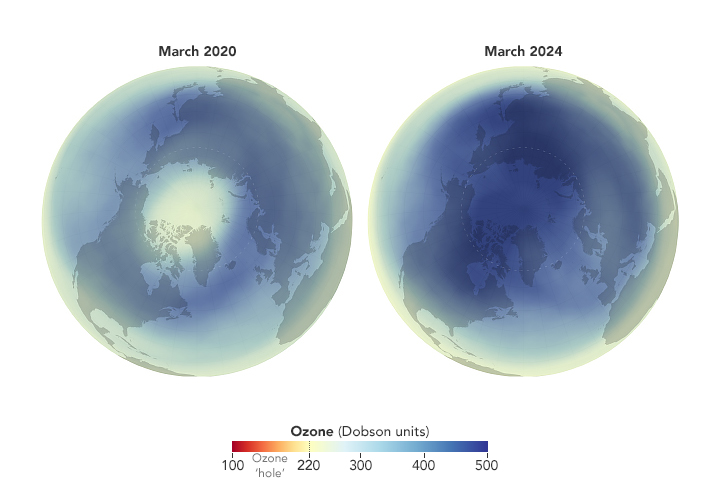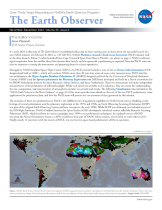



Recent Imagery
You will be directed to the NASA Visible Earth webpage when you select Images by Mission below, or click on the images at right that are randomly generated to represent four out of all possible topics.
The Earth Observer has a new look! Visit the NEW Earth Observer website.
The Earth Observer: Nov - Dec, 2023
In This Issue
Click title below to view page
- Feature Articles
- NASA Earth Science and Education Update: Introducing the Science Activation Program06
- SHADOZ Ozonesonde Network Celebrates 25 Years and 10,000 Profiles13
- Meeting Summaries
- Summary of the Fifty-Second U.S.–Japan ASTER Science Team Meeting21
- Preparing for Launch and Assessing User Readiness: The 2023 PACE Applications Workshop25
- In the News
- NASA, Partners Explore Sustainable Fuel’s Effects on Aircraft Contrails35
- NASA, Pacific Disaster Center Increase Landslide Hazard Awareness37
- International Ocean Satellite Monitors How El Niño Is Shaping Up40
- Also Included in this Issue
- In Memoriam—Mary Cleave33
- NASA Earth Science in the News41
- Earth Science Meeting and Workshop Calendar43
The Editor's Corner
Steve Platnick, EOS Senior Project Scientist
It is early 2024 as this issue of The Earth Observer is published online and we have exciting news to share about the successful launch of a new NASA mission. On February 8, 2024, at 1:33 AM EST, NASA’s Plankton, Aerosol, Cloud ocean Ecosystem (PACE) mission took to the skies aboard a Falcon 9 rocket launched from Cape Canaveral Space Force Base in Florida—see photo on page 4. NASA confirmed signal acquisition from the satellite about five minutes after launch, and the spacecraft is performing as expected. Now the PACE team can turn its attention to testing the instruments and preparing them for science operations.
Managed by NASA’s Goddard Space Flight Center (GSFC), the PACE payload includes a state of the art Ocean Color Instrument (OCI) designed and built at GSFC—which will continue NASA’s more than 40-year time series of ocean color measurements. PACE also flies two polarimeters: the Hyper-Angular Rainbow Polarimeter #2 (HARP2) designed and built by the University of Maryland, Baltimore County (UMBC) and the Spectro-polarimeter for Planetary Exploration one (SPEXone) developed and built by a Dutch consortium led by SRON Netherlands Institute for Space Research, Airbus Defence, and Space Netherlands. These two instruments will make independent measurements of the angular distribution of polarized reflected sunlight. While such details are invisible to the naked eye, they are crucial for understanding the size, composition, and concentration of atmospheric particles (or aerosols) and clouds. A Visualization (also included in the “NASA Earth Science in the News Column” on page 41 of this issue) provides more details on the role of the two PACE polarimeters, some applications for polarimetry data, and how the PACE team will process the vast amounts of data generated by this mission.
The inclusion of these two polarimeters on PACE is the fulfillment of a long-desired capability for NASA Earth science. Building on the heritage of several polarimeters used for planetary exploration in the 1970s and 1980s, an Earth Observing Scanning Polarimeter (EOSP) was part of the original Earth Observing System platform concepts in the early 1990s. While EOSP was ultimately not included...
Read more...

